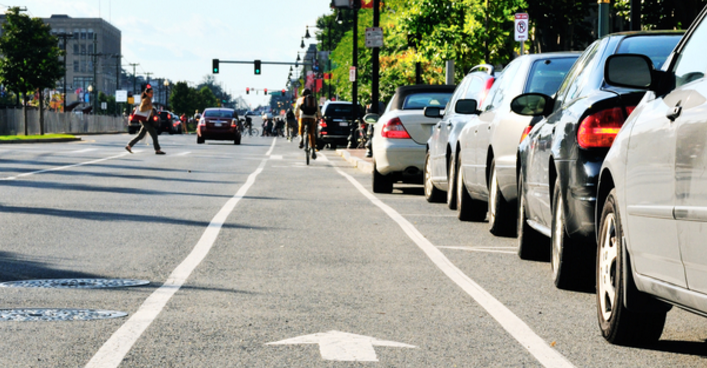Coupled with advancements in the internet, social networking, location-based services and mobile technologies, and buoyed by the growing popularity of the sharing economy, shared mobility has emerged as hugely influential movement in urban transport.
This refers to the various service models and transportation modes that aim to meet and surpass the diverse and unique needs and expectations of travellers, such as roundtrip services, one-way station-based services and one-way free-floating services.
Explainer
- Roundtrip services: vehicle, bicycle, or other low-speed mode is returned to its origin
- One-way station based services: vehicle, bicycle, or low-speed mode is returned to a different designated station location
- One-way free-floating services: vehicle, bicycle, or low-speed mode can be returned anywhere within a geographic area
Its mainstream appeal is easy to see. Shared mobility has the potential to offer communities a wide array of benefits including increased mobility; greater environmental awareness; reduced vehicle emissions; and enhanced first-and-last mile connections to public transportation.
Because of their role in managing and regulating public space, local governments, in particular, can have a substantial impact on the role and success of shared mobility in their communities. There are plenty of avenues for decision-makers to explore, such as developer and zoning regulations, but we’d like to draw attention in this article to rights-of-way.
This is a term used to describe the movement of people – and their means of transportation – along public and sometimes private property. Rights-of-way typically encompass most surface transportation facilities, including streets, bicycle lanes, and sidewalks. A number of public agencies have developed policies to allocate public rights-of-way, such as curb space and parking for shared modes.
When allocating public rights-of-way to private sector shared mobility operators (e.g. car-sharing, bike-sharing, microtransit, and others), the following should be considered:
- What will be the process for allocating public space to private mobility operators?
- Should there be limits on the amount of space allocated?
- Will fees be assessed for private use of public space? If so, how will these costs be determined and assessed?
- Will special signage be permitted to identify areas, such as special parking spaces and loading zones? If so, who will be responsible for their installation and maintenance?
- What type of enforcement mechanisms will be in place to prohibit unauthorized activities (e.g. ticketing, booting, towing)?
- What processes are needed to ensure public involvement and to address environmental justice and other equity issues?
- Will documentation of social, environmental, and transportation impacts be required?
When developing policies to allocate and regulate public rights-of-way, public agencies should consider approaches that strive to increase accessibility, enhance mobility, and leverage the potential benefits of shared mobility.
Allocating parking and loading zones are a few of the ways local governments can support shared mobility, minimise modal conflicts, and improve public safety in communities. Finally, an analysis of social and environmental impacts should be conducted whenever possible to support policy development and revisions, as needed.
A number of US cities are already approaching the management of public rights-of-way for shared mobility in innovative ways. Here are a few:
Examples of how US cities are rethinking rights-of-way
- Portland’s Car-sharing Parking Auctions Each year the City of Portland creates a list of on-street metered parking spaces available for lease to car-sharing operators. The city facilitates an auction where operators can bid on these parking spaces. The minimum bid is calculated by adding together the amount of lost meter revenue and the installation, maintenance, and administrative costs associated with leasing the parking space for exclusive car-sharing use.
- San Francisco’s Car-sharing Parking Policy The San Francisco Municipal Transportation Agency (SFMTA) designates up to 900 parking spaces for roundtrip car-sharing citywide. With just under 47 square miles in the city, the policy averages approximately 19 car-sharing vehicles per square mile (if evenly distributed).Each organization that participates in the program is eligible for 150 parking spaces. Monthly pricing per space varies between $50 and $225 and is based on three demand zones established by the city. Additionally, operators pay a one-time installation fee of $400 USD per space. Each approved vehicle receives a designated parking permit exempting it from street sweeping, time limits, and other parking restrictions.
- San Francisco’s Employer Shuttle Policy In January 2014, SFMTA adopted a policy requiring employer-based shuttle services to pay to use loading zones. The policy imposes a number of operational requirements intended to minimize conflicts with other modes and improve public transit efficiency, such as yielding to public buses and pulling to the front of the loading zone to make room for other vehicles. As of April 2016, shuttle operators pay $3.67 USD per each stop event to load and unload passengers in the designated loading zones.
- Seattle’s Free-Floating Car-sharing Parking Policy In 2012, Seattle approved a policy enabling one-way car-sharing fleets to “float” around the city. The policy requires that car-sharing operators pay an initial flat rate to the city ($1,330 per vehicle, per year) for administrative costs, on-street parking, and residential parking zone permits.At the end of the year, the car-sharing operator is required to provide Seattle with data on how much parking was used and to pay for any additional parking fees accrued.Seattle permits up to four car-sharing operators to each apply for 500 vehicle permits (or 750 vehicle permits, if the operator agreed to cover the entire city).Car-sharing operators in Seattle currently pay $300 annually for designated on-street parking in free zones, $3,000 annually for designated on-street spaces in paid zones, and $1,730 for an annual free-floating parking permit (the fee is adjusted annually based on actual meter use in paid parking areas).
This article was co-authored with Susan Shaheen.
Cohen and Shaheen are co-authors of the American Planning Association report Planning for Shared Mobility.
